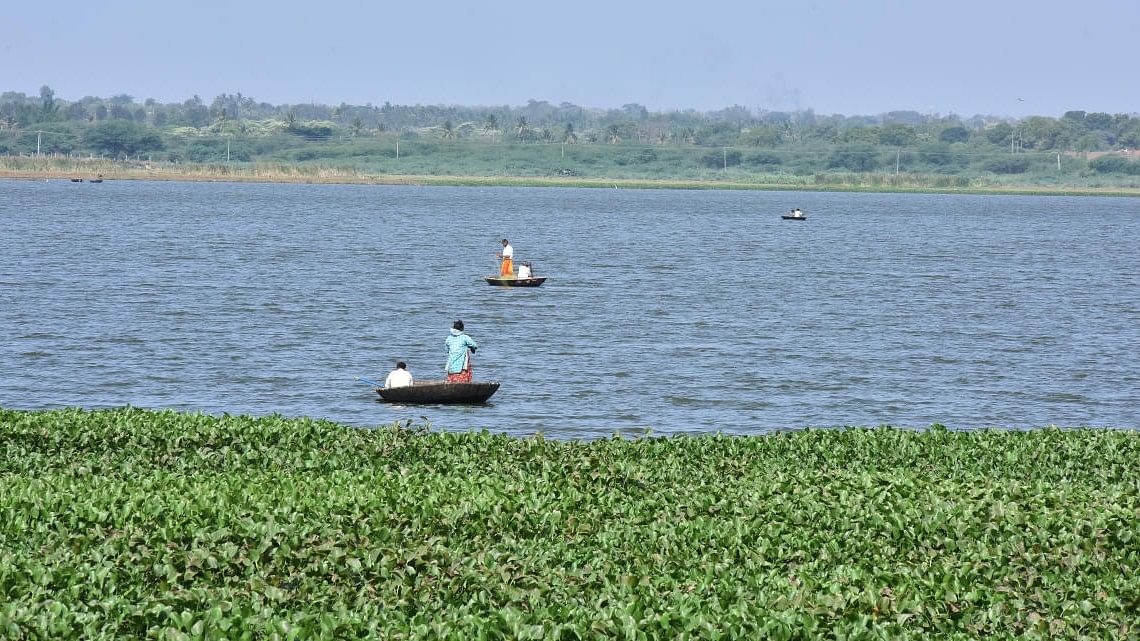
Fishermen at Unkal lake in Hubballi.
Credit: DH Photo
It is estimated that the state is home to around 37,000 lakes.
Unfortunately, over the years, a large proportion of them have begun to be choked with sewage, silt and other forms of pollution. Most lakes are under the oversight of panchayats, the minor irrigation department and urban local bodies. For instance, around 200 lakes come under the ambit of the Bengaluru Bruhat Mahanagara Palike and the urban development department.
With continued advocacy for lake rejuvenation and several specific policy developments in the past decade, there have been many efforts to restore these water bodies. It was only last month that Kalaburagi’s revamped Sharanabasaveshwar lake was opened to the public, with officials promising similar restorations for other lakes in the district.
In Dharwad, the district tank development authority met last week and decided to embark on a new project, targeting one tank in each village. New tanks will be constructed under the MGNREGA scheme.
Workers cleaning and renovating lake due to summer lake is dry and lake is prepare for monsoon rain water stock at Cubbon Park in Bengaluru on Saturday 16th March 2024.
Credit: DH Photo/ S K Dinesh
Works to divert sewage water away from Unkal lake has been a priority in Hubballi. The project has been executed in over five years, and now, additional works are being planned. While the lake is being beautified under the Smart City project, sewage water is still a problem.
Similarly, in Mangaluru, even though crores of rupees have been spent on the rejuvenation of Gujjarakere and Kavoor Kere under the Smart City project, the water bodies remain polluted due to the uninterrupted flow of sewage. Gujjarakere, spread over 3.4 acres, has a history of over 1,800 years. It was a source of drinking water in the past and was linked to many religious ceremonies.
Bengaluru’s lakes — those in Varthur, Hebbal, Bellandur or Sarjapur, to name a few — have seen various degrees of pollution and neglect. Every so often, the local community will raise an uproar over the state of the lake, leading potentially to an official response and action.
In many cases, very little changes. However, we are not without success stories to emulate. In some cases, lakes have seen complete transformation, from dumping grounds to well-loved, used and maintained public spaces. In Bengaluru, the past decade has seen the community frequently step up to volunteer, make a change and keep it going.